Kromfohrlander
The Kromfohrlander is a small brown and white dog with smooth or wire hair. They were originally bred as companion animals and were never developed for a specific purpose, like many other small dog breeds. However, they do have a prey drive. They fit in well with most households due to their loving personality and easy-going nature, though they may be shy at first.
They enjoy playing and benefit from lots of attention and access to the outdoors. They are typically a pleasure to train and will work hard to earn praise because they are so dedicated to their owner and devoted to making them happy. They have surprisingly high exercise requirements for their size and thrive when provided with an active lifestyle.

Height:
15-18 in (38-46 cm)

Weight:
22-35 lb (9-16 kg)

Origin:
Germany

Life Expectancy:
13-15 years
Dog Breed Characteristics
Appearance
The Kromfohrlander is a small, attractive dog that can be smooth or wire-haired. The wire-haired Kromfohrlander has a beard, whereas the smooth-haired Kromfohrlander has a shorter coat. Adult dogs typically stand 15 - 18 inches tall and weigh 22 - 35 pounds, depending on the sex of the breed.
Their heads are typically dome-shaped, and their medium-sized light brown eyes have a lively gaze. Their nose should be dark, and their ears should be flopped forward with a round (rather than pointed) tip. They should have a straight back and a body that is longer than it is tall. They have an athletic appearance due to their tucked-in abdomens and muscular legs. Their feathered tails are carried over their backs.
Coat type
The coat of the Kromi can be rough or smooth, and the length of each coat type can vary. Wirehaired or rough-coated dogs always have a beard, which gives them a cute, scruffy look. The hair is thick and coarse in texture. A short, soft undercoat lies beneath it.
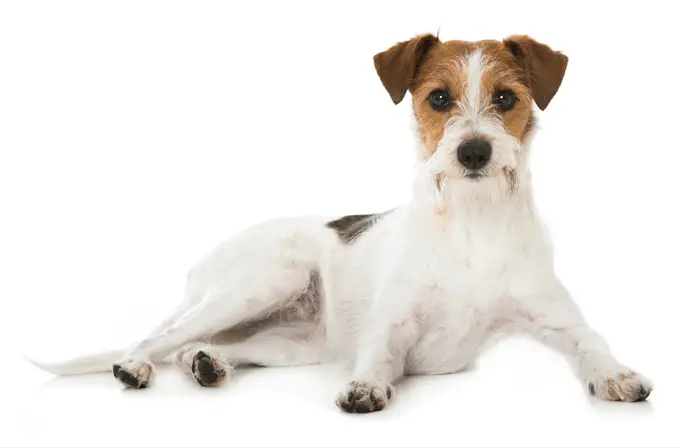
The smooth-coated dogs have feathers on their ears, chest, legs and a lovely plumed tail. Their body hair can be short or long, and it is topped by a short, soft undercoat.
Coat color
The Kromfohrlander's coat color is white with tan markings, and the white blaze on their face should be symmetrical.
Temperament
The Kromi is known for being adaptable, docile, and happy. This breed is not particularly independent, preferring to be with their family when they are present rather than out in the yard on their own. Kromi's watchwords are "sweet" and "loyal." These dogs can amuse themselves when necessary; it’s just that they prefer having human company. It's not uncommon to see a Kromi throw a toy and then retrieve it.
Despite having at least some Terrier ancestors, the Kromi — bred to be purely a companion dog — has a pleasant, moderate temperament. These dogs enjoy playing and are usually fond of family members but reserved around strangers. They have alert personalities that can make them suitable for the role of watchdogs. They should not be aggressive or shy in general, though these issues are uncommon in the breed.
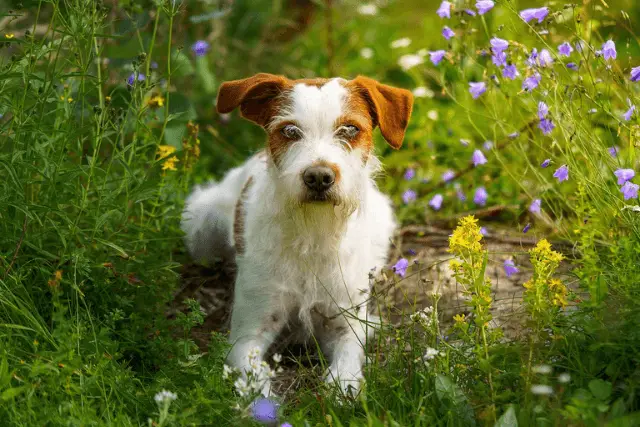
A well-bred, well-socialized Kromi will usually bark, but not excessively or to the point of getting on your nerves. They dig, but they don't leave craters in your yard. These dogs usually get along with people and other animals after they've had a chance to inspect them.
Allow Kromi time to get to know you if you are meeting the dog for the first time. They prefer to observe before deciding whether or not they like someone.
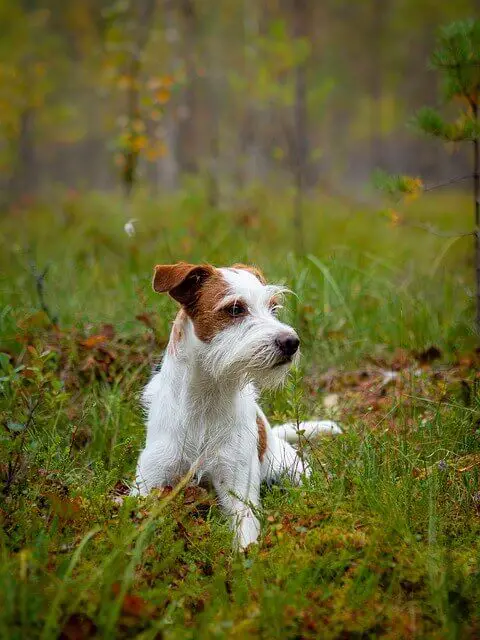
By no means is the Kromi perfect? After puberty, this breed can develop temperament issues. A puppy who was initially friendly and loving may become uncertain or anxious, reacting aggressively to other dogs or even people, particularly when on a leash. The smallest amount of stress can set the dog’s stand-offish temperament off.
Strangers may be unable to touch the dog, making veterinary visits challenging or impossible. If the dog becomes overly attached to one person, they may refuse to be cared for by anyone else if that person is unavailable. Some Kromfohrlanders can be excessively territorial and dislike having visitors in their homes.
These dogs require consistent guidance from puppyhood to adulthood to learn to trust their owners and start behaving acceptably again.
Care guide
The Kromfohrlander is a delightful little breed. They were bred as companion dogs, but they still require proper care. The good news is that Kromfohrlanders are relatively simple to look after. They are usually laid-back. If they aren't, training and socialization can influence their temperament. The following are the most critical aspects of Kromfohrlander's care.
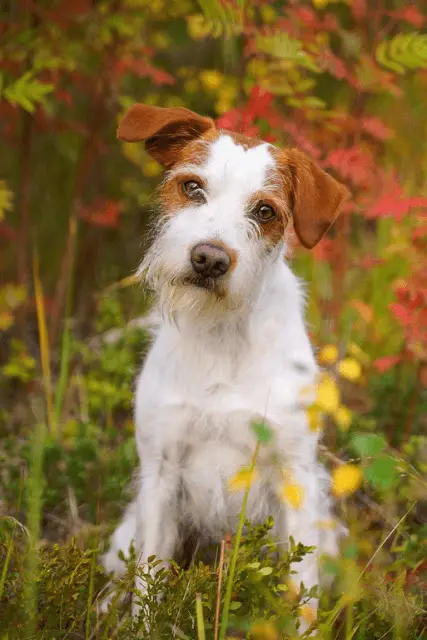
Grooming
Brushing this breed once or twice a week is usually sufficient, regardless of coat type. They are moderate shedders who shed more during the summer months. During this time, giving them a good grooming session outside will help to reduce the amount of loose fur shed inside the home.
Because their ears do not stand upright, they are more likely to develop ear infections throughout their lives. Their ear canal receives less airflow and is darker and moister than that of a dog with erect ears. This creates an environment conducive to the growth of yeast and bacteria. Ears should be cleaned out of wax on a regular basis to avoid infections.
Ears must be dried immediately after becoming wet. You can also use ear cleaners designed specifically for dogs to keep their ears healthy.
It would be ideal if you could get your Kromfohrlander used to teeth brushing. Like any other dog breed, these dogs can develop dental problems if their teeth are not adequately cared for. Once a day is ideal, but if you can get your dog to clean their teeth three times a week, that is also acceptable.
Training
The Kromfohrlander is notoriously easy to train because they are agreeable and eager to please their owners. They learn quickly and are very obedient. Because they can be sensitive, their trainer should be patient and kind, avoiding negative reinforcement or any form of punishment.
To achieve the best results, training should be kept interesting at all times. Avoid repetition or excessively long sessions. Positive training methods that include lots of praise and doggy treats work best for these dogs.
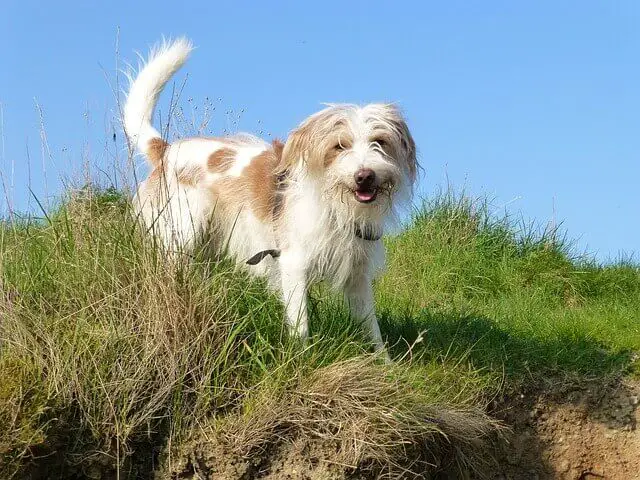
Exercise needs
Despite their small stature, the Kromfohrlander requires a significant amount of exercise, at least 30 minutes per day. They have a lot of energy and like to play all sorts of games. Toys, puzzles, and companionship will help to keep them mentally stimulated and content.
A fenced-in garden can provide a safe haven for the Kromfohrlander to explore. Still, it should not be mistaken for daily exercise. They like to dig, but not to the extent that it becomes a problem.
Socialization
Kromfohrlanders, as previously stated, can have an interesting development. They could start out as friendly puppies and grow into intolerant, unfriendly adult dogs. As a result, socialization should be a priority in your Kromfohrlander's life. This process should begin the moment the puppy enters your home.
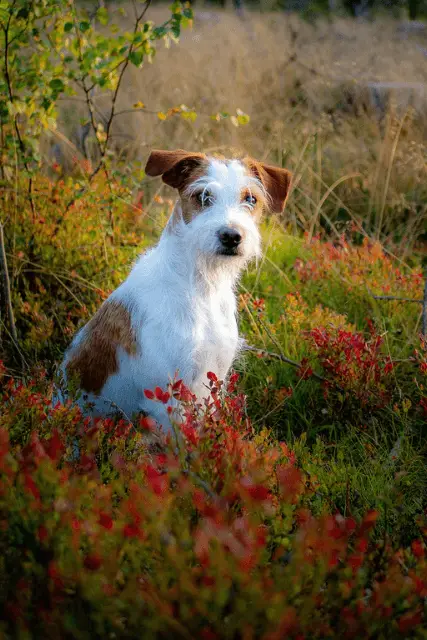
Make sure that your Kromfohrlander is exposed to a variety of situations. Take them to dog parks, malls, and busy streets where they will be surrounded by other dogs and people. Ensure that your dog has a pleasant experience. This is the only way to ensure that your dog grows into a well-mannered, confident, and friendly dog. Socialization can make life easier for both you and your dog.
Health
While the Kromfohrlander is usually a healthy dog, there are a few conditions that vets have reported in the breed. In a breed with such a small population, it is critical that only the healthiest dogs are bred. These dogs can live for 13 to 15 years. The following health issues have been observed in the Kromfohrlander breed:
- Cystinuria - A condition in which the dog's kidneys cannot filter Cystine properly (an amino acid)
- Patellar luxation - A condition in which the dog's knee cap (or patella) pops out of place. It can be mild or severe.
- Hyperkeratosis - A condition in which the skin on a dog's nose and paw pads proliferates, resulting in hard and abnormal growths that can cause pain
- Epilepsy - The dog has seizures for no apparent reason
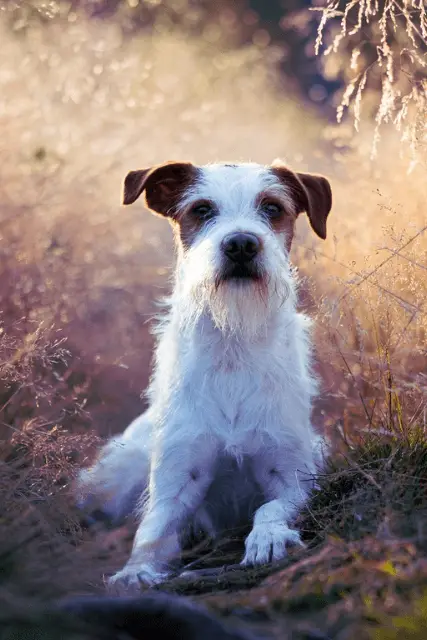
Kromfohrlander breeders
Kromfohrlander is not a very popular dog breed worldwide, so you must be patient if you want to get one. Take your time and look into your options when looking for a Kromfohrlander breeder. We recommend that you only search for and contact official and responsible dog breeders because doing so ensures that your future puppy has the best possible start in life.
Breeders who are responsible take good care of their dogs and provide them with everything they require. Furthermore, they will ensure that only the healthiest dogs are bred.
World Dog Finder team

Updated at31.08.2023.
Breed History
The Kromfohrlander is a modern breed that arose as a result of the United States' involvement in Germany following World War II. The exact story varies, and we might never learn the actual truth. According to some sources, the breed's foundation dog, Peter, was a scruffy canine mascot discovered by US troops in northern France. His ancestors could have been a cross between a Grand Basset Griffon Vendeen and a Fox Terrier.
Peter became separated from the troops for some reason, but he was rescued by a woman named Ilse Schleifenbaum. She adopted him, and Peter “fell in love” with Fifi, a black-and-white Fox Terrier. Shaggy and Witch, their puppies, resembled their father in appearance and temperament. Ilse decided that the dogs' qualities were worth reproducing and named them "krom fohr" ("crooked furrow") after the local landscape.
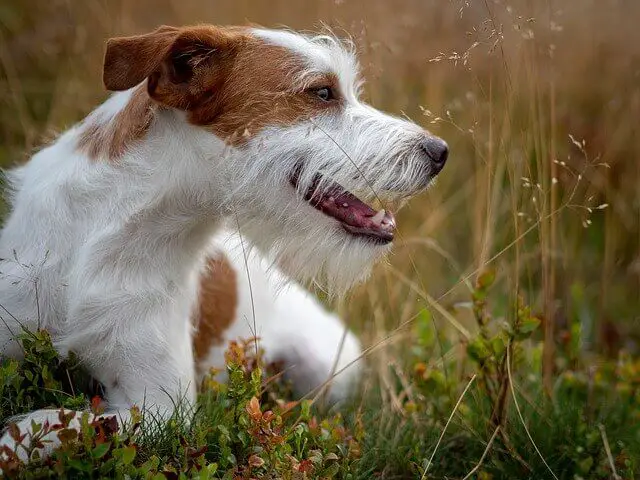
According to another version of the breed's history, Peter was traveling with the troops when he was given to Frau Schleifenbaum. She bred him with her own dog, described as resembling a Griffon Fauve de Bretagne, and had five litters with the sire's stamp. In any case, they were recognized as a distinct breed by the Federation Cynologique Internationale in 1955.
Button von der Britzer Muhle was the first Kromi imported to the United States in 1997. In 1999, he was followed by a female, Finca vom Kahlharz. The United Kennel Club recognized the breed in 1996, initially classifying it as a Terrier but later reclassifying it as a companion dog in 2013.
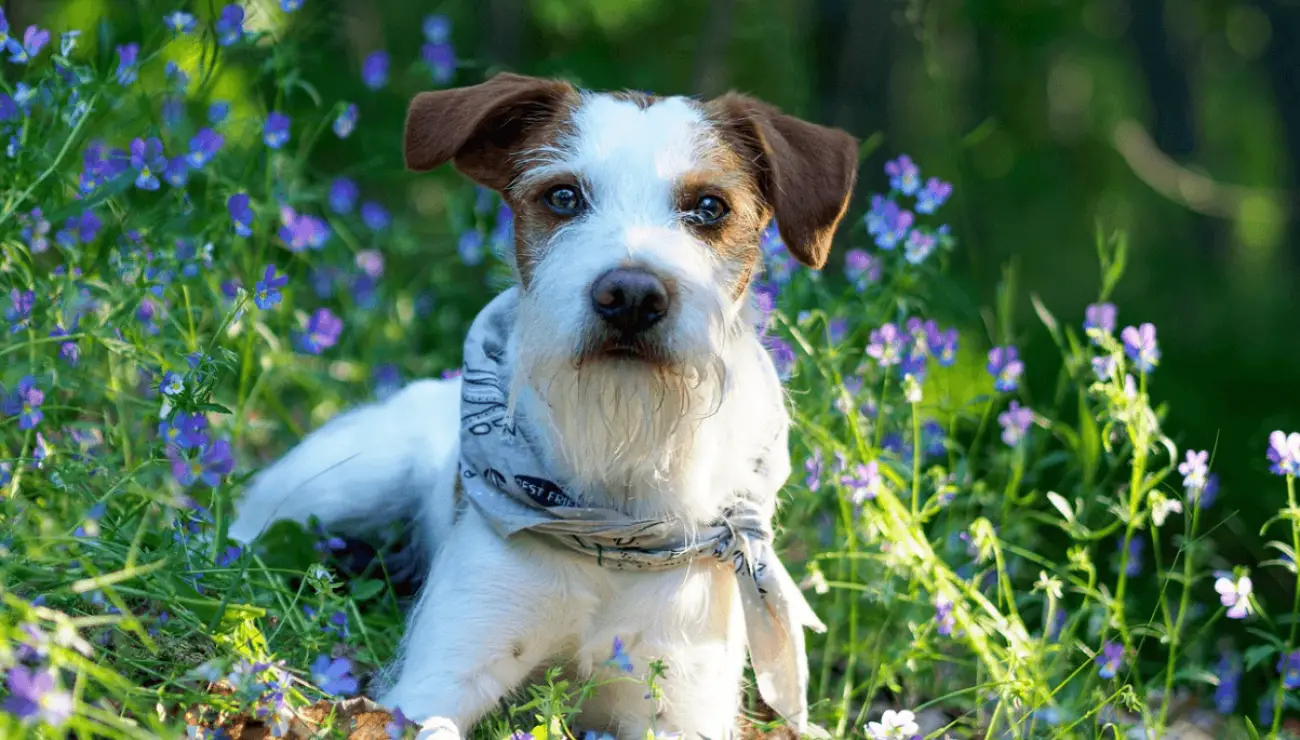
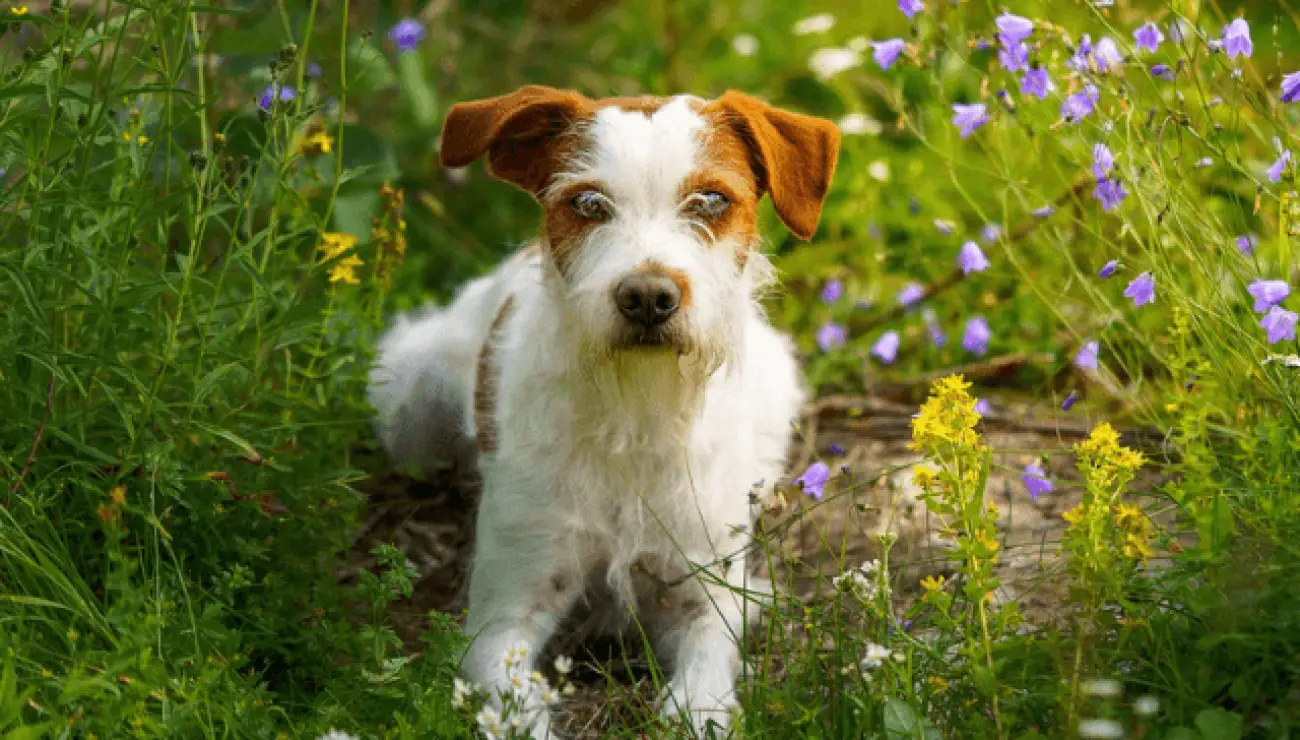
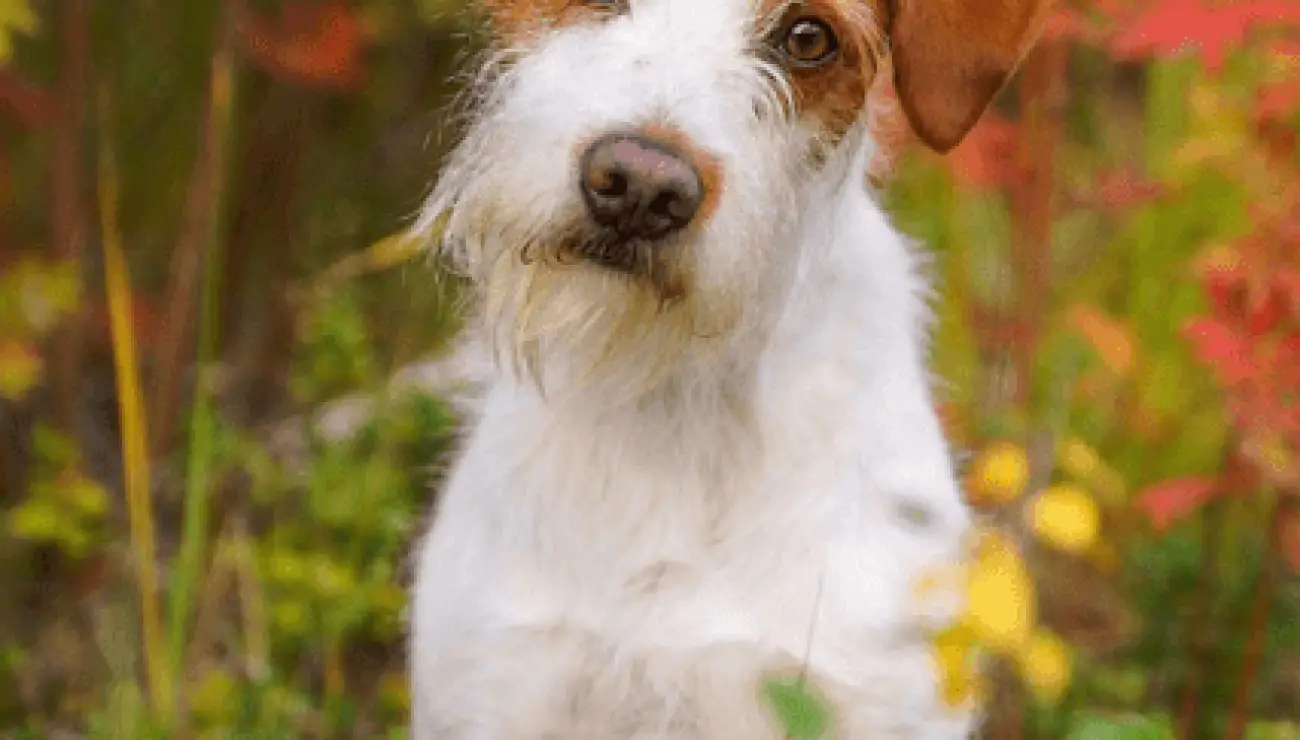
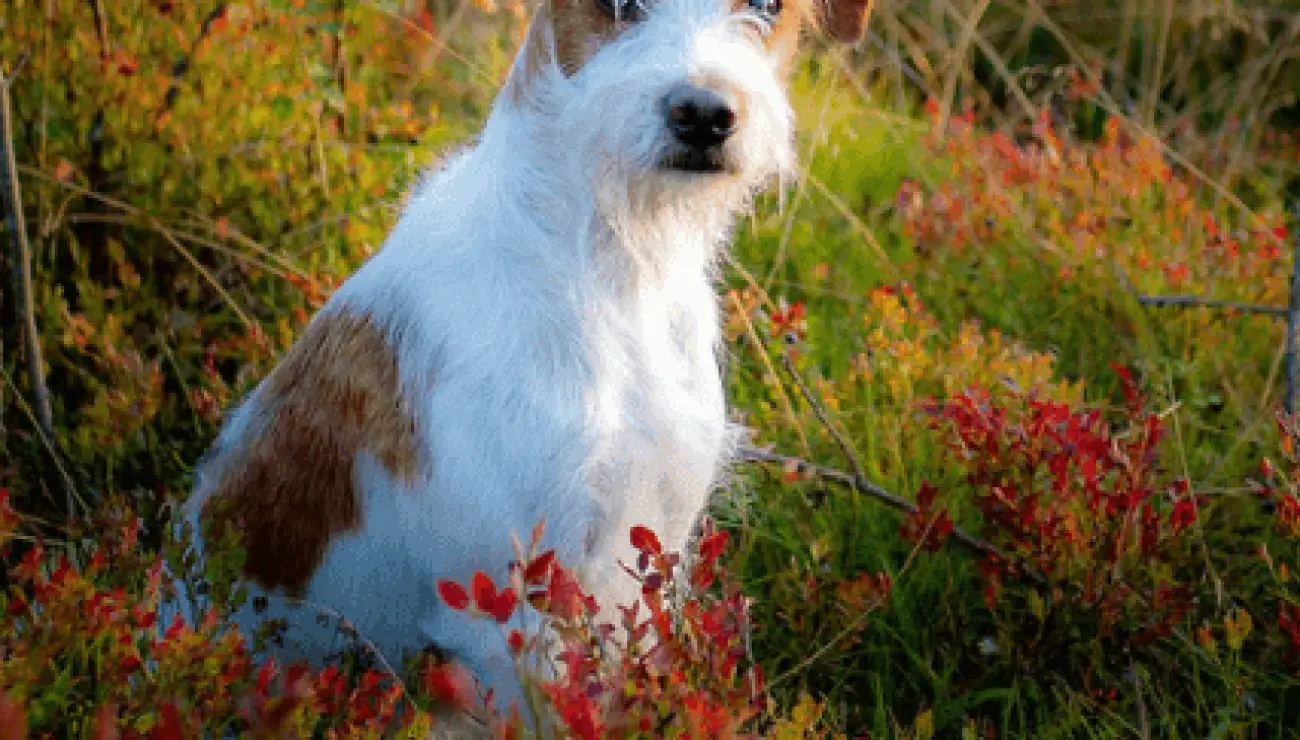
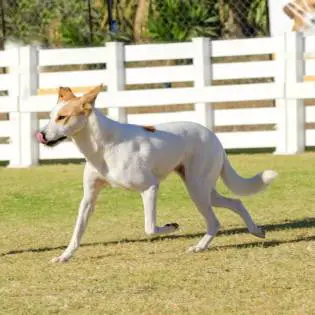
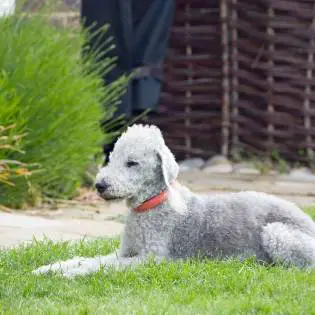
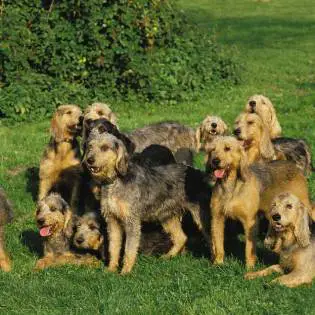
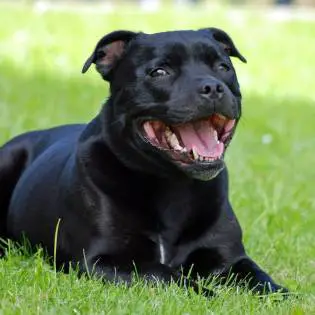

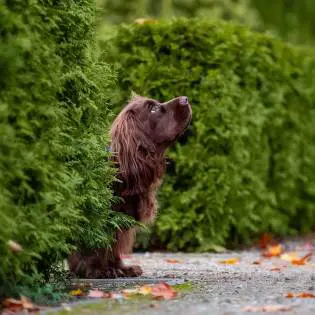

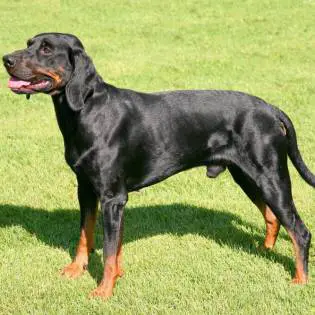
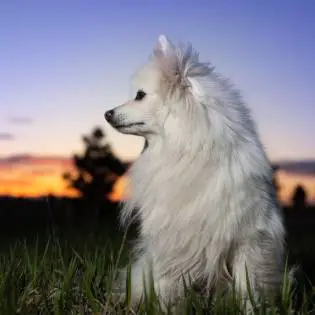
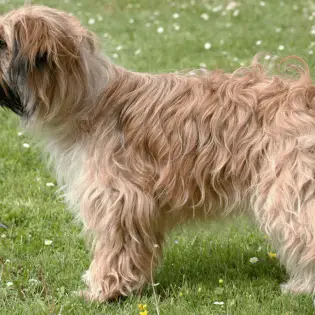

Share